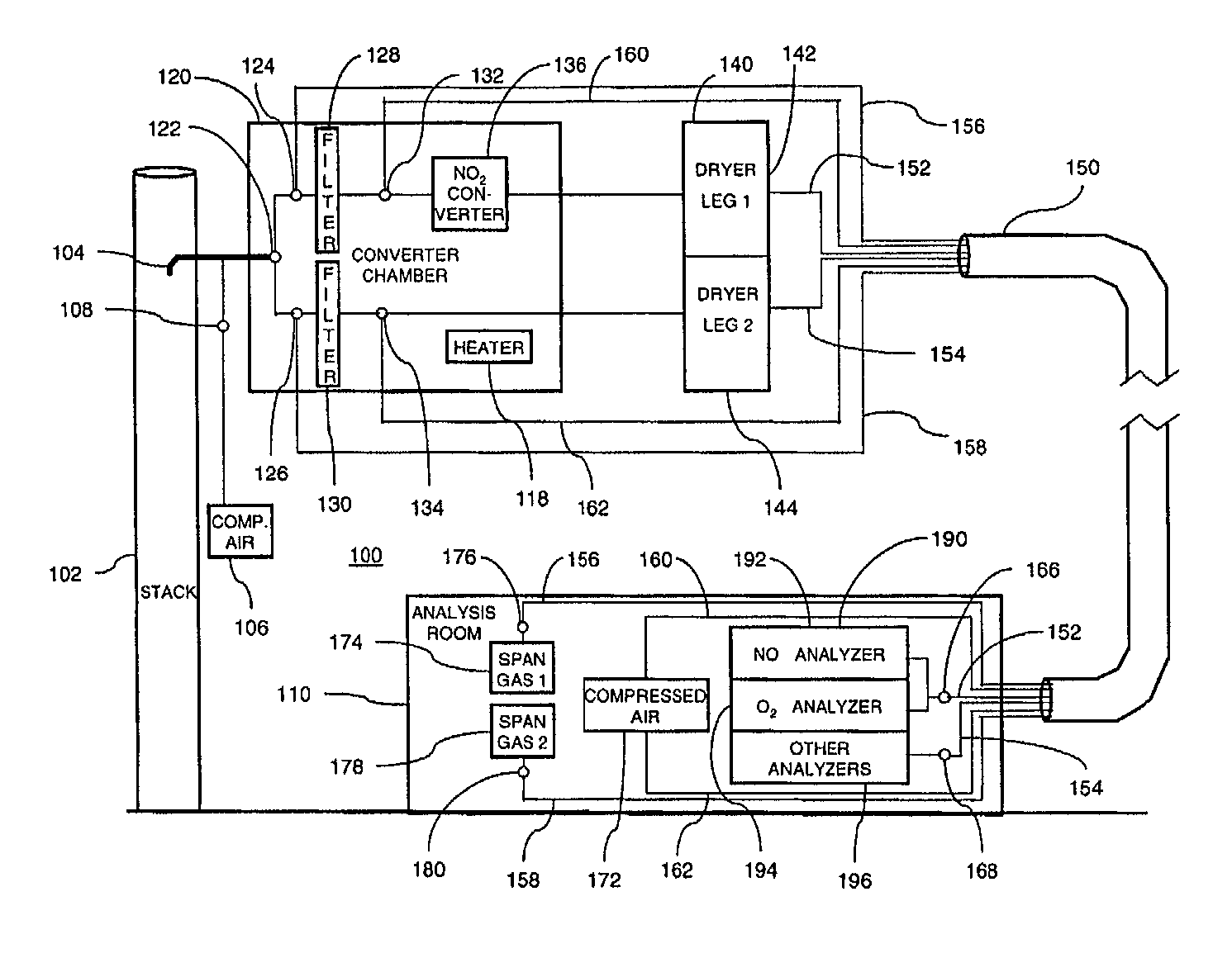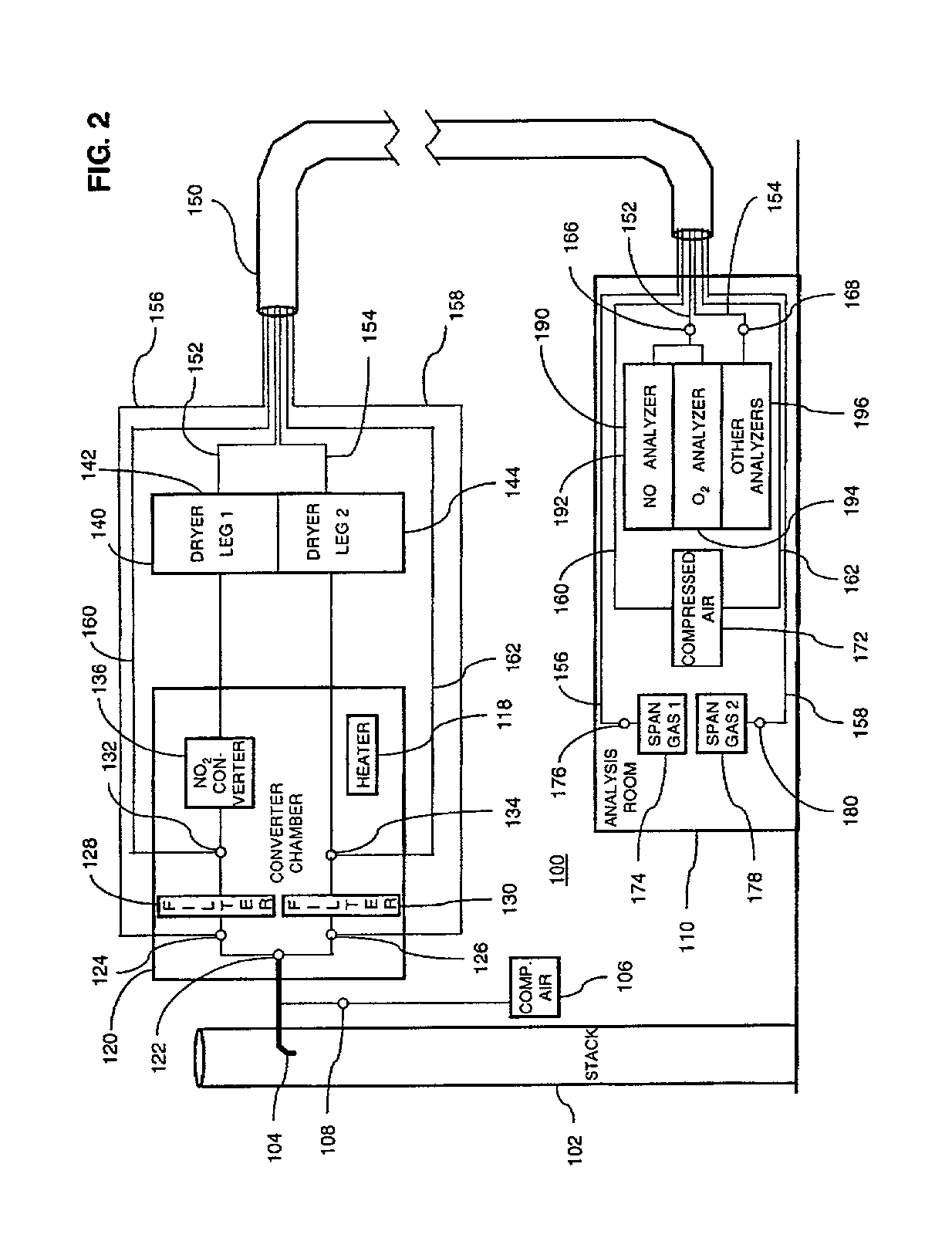Method and system for monitoring combustion source emissions
a technology of combustion source and monitoring system, applied in the direction of material heat development, instruments, investigating moving fluids/granular solids, etc., can solve the problems of preventing the system from meeting the accuracy requirements, system subject to a number of sources of bias, etc., and achieve the effect of minimizing bias
- Summary
- Abstract
- Description
- Claims
- Application Information
AI Technical Summary
Benefits of technology
Problems solved by technology
Method used
Image
Examples
Embodiment Construction
[0019]The present invention provides an emissions monitoring system that minimizes bias effects in the capture and analysis of NOx emissions. The invention also provides a method for routinely monitoring the system to identify changes in measurement bias. FIG. 1 is a schematic illustration of a typical prior art emissions monitoring system 10. In the system 10, multiphase exhaust emissions are drawn from a stack 18 using a sampling device 12. At the outlet of the sampling device 12, the emissions are passed through a filter 14 to remove large particulate matter on the order of 7 microns or greater.
[0020]The resulting sample gas and any remaining particulate matter are then passed through a heated sampling line 16 to a CEMS analysis room 20. The analysis room 20 is typically a small ground level building, trailer or mobile sampling van that houses the analyzers for the various types of emissions that must be assessed. Such a building is typically carefully climate controlled. Upon en...
PUM
 Login to View More
Login to View More Abstract
Description
Claims
Application Information
 Login to View More
Login to View More - R&D
- Intellectual Property
- Life Sciences
- Materials
- Tech Scout
- Unparalleled Data Quality
- Higher Quality Content
- 60% Fewer Hallucinations
Browse by: Latest US Patents, China's latest patents, Technical Efficacy Thesaurus, Application Domain, Technology Topic, Popular Technical Reports.
© 2025 PatSnap. All rights reserved.Legal|Privacy policy|Modern Slavery Act Transparency Statement|Sitemap|About US| Contact US: help@patsnap.com



